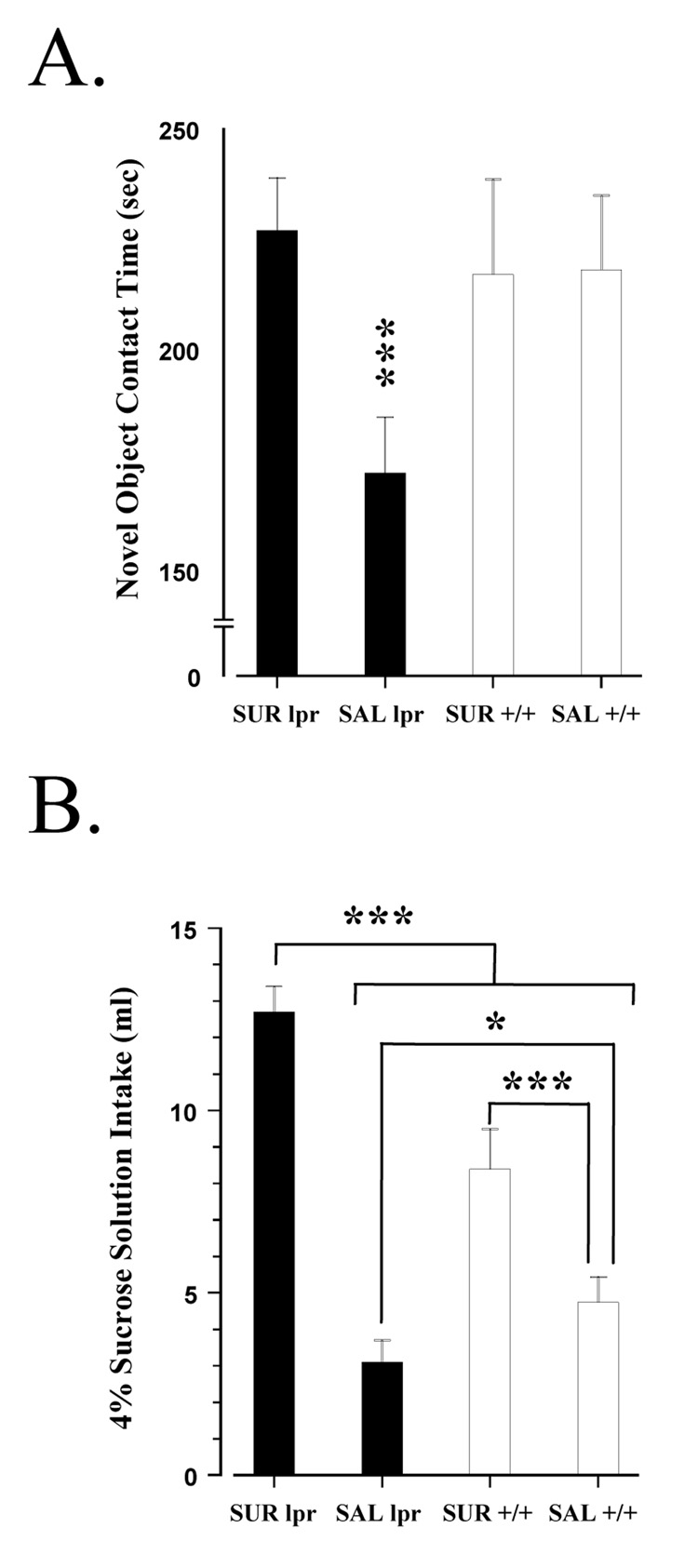Fig. 3.
Behavioral performance between MRL substrains. (A) In the novel object test, untreated MRL-lpr mice exhibited increased anxiety-like behavior (i.e. distress to novelty), consistent with previous reports (Sakic et al., 1994, 1995). Suramin treatment, however, prevented the emergence of “neophobia” in MRL-lpr animals. (B) Total intake of sucrose in 60-min preference tests given over three consecutive nights. MRL-lpr saline controls consumed significantly less of the 4% sucrose solution (ml) in comparison to the other three groups. The difference between MRL-lpr saline and MRL+/+ saline animals has previously been reported (Sakic et al., 1996; Maric et al., 2001; Ballok et al., 2004a), and is proposed to reflect “anhedonia”. Suramin treatment, however, resulted in a 3-fold increase in sucrose consumption by MRL-lpr animals (relative to the MRL-lpr saline group). This increase could not be attributed to caloric requirements or water deprivation, and suggests a reversal of anhedonic-like behavior. The MRL +/+ drug group also showed elevated sucrose intake, but when considering the significant reduction in food consumption of this group (prior to sucrose testing), the caloric value of solution may account for the observed 2-fold increase. Alternatively, suramin treatment may have increased craving for carbohydrates in both MRL groups.

